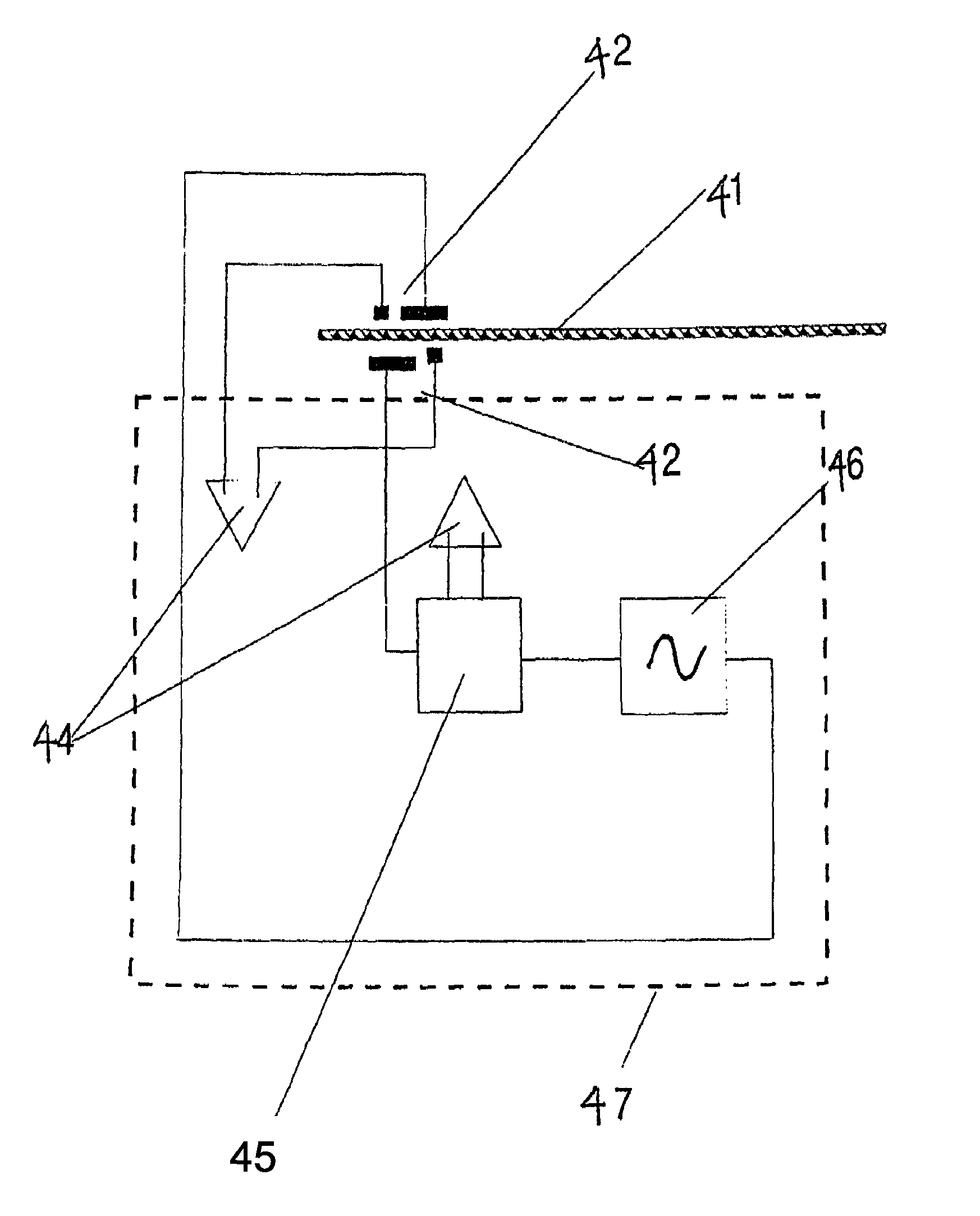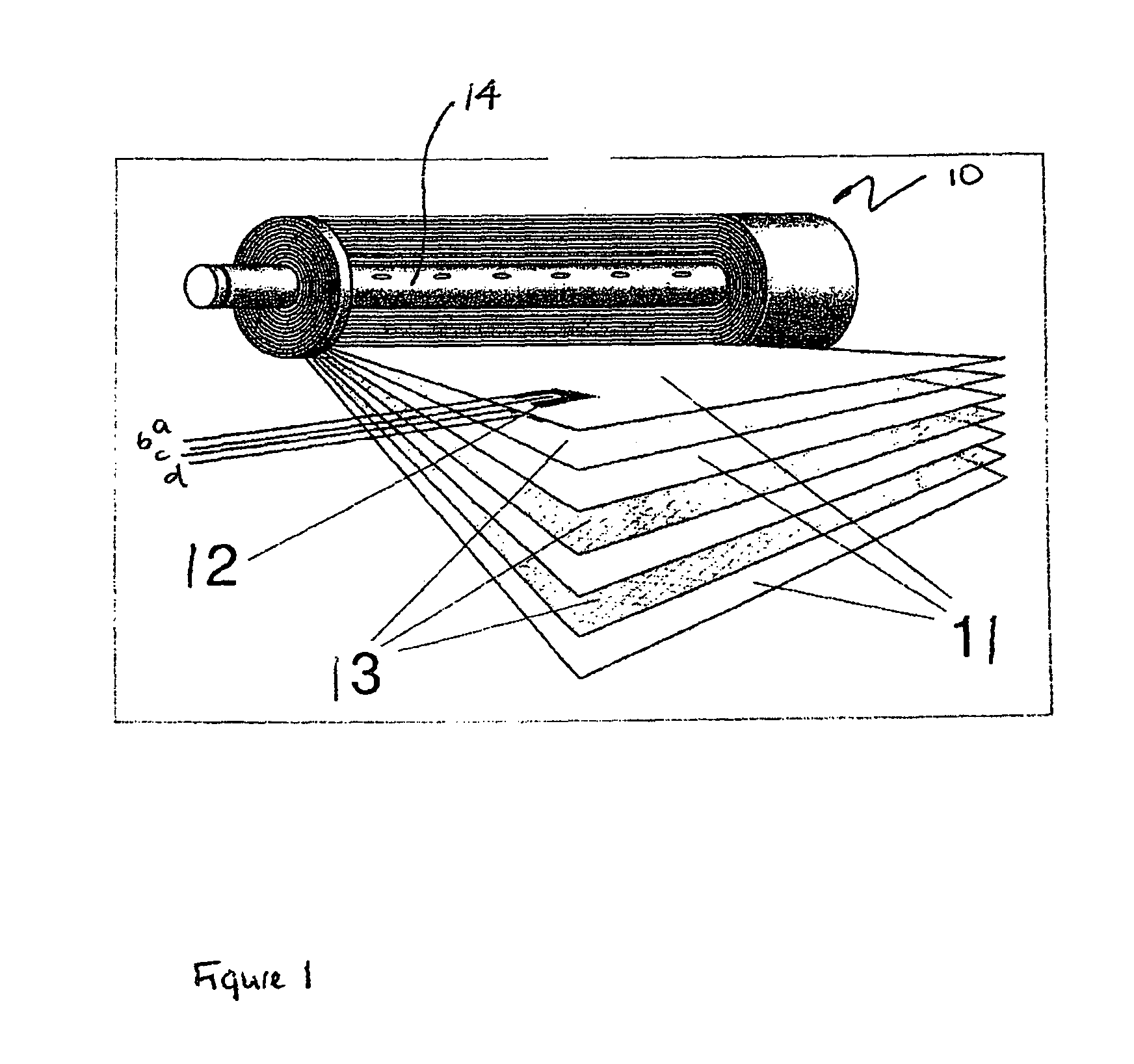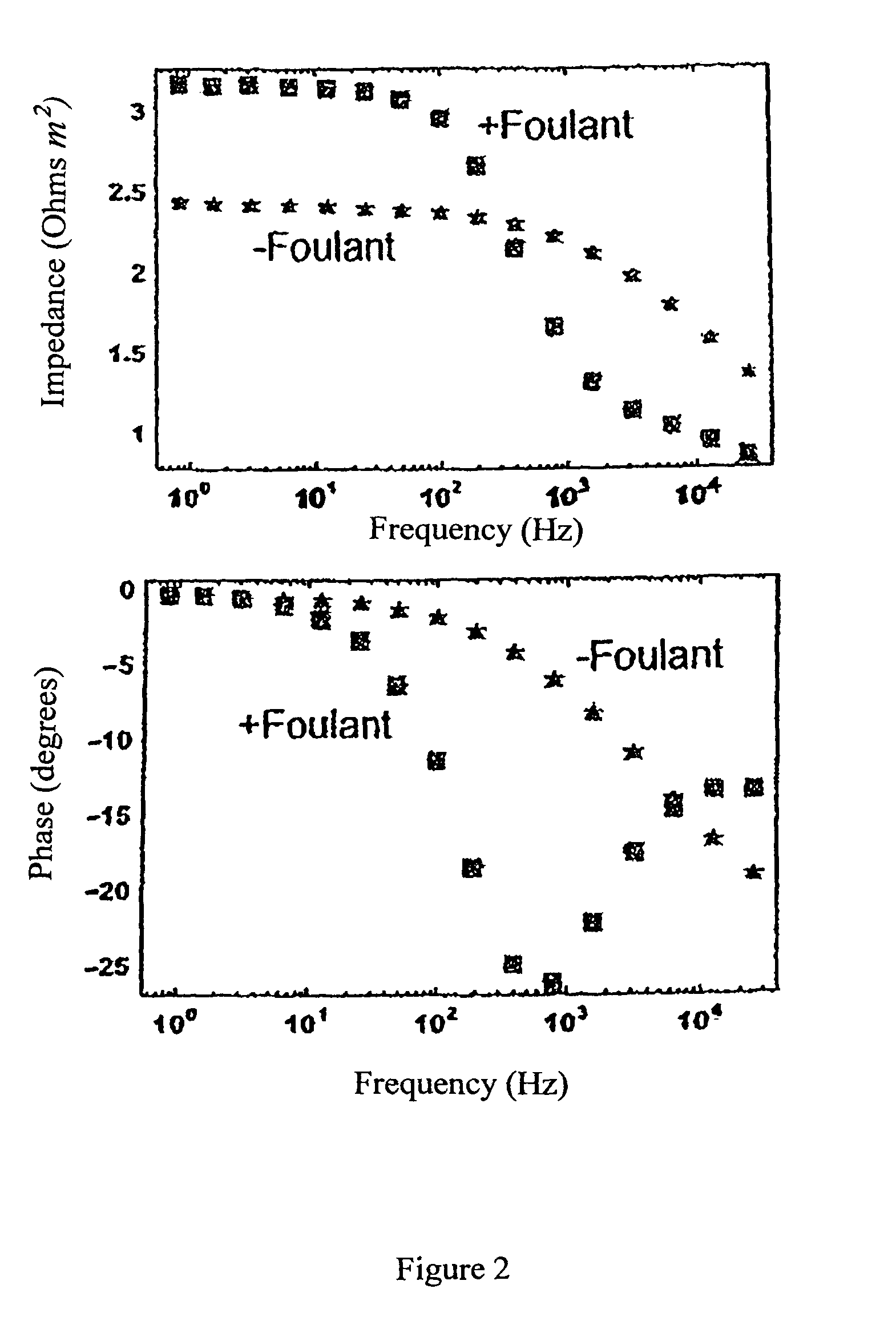In situ membrane monitoring
a technology of in situ membrane and monitoring device, which is applied in the direction of membranes, instruments, material impedance, etc., can solve the problems of significant negative impact of reduction of membrane rejection characteristics, reducing salt rejection, and reducing membrane rejection characteristics. to achieve the effect of reducing precision
- Summary
- Abstract
- Description
- Claims
- Application Information
AI Technical Summary
Benefits of technology
Problems solved by technology
Method used
Image
Examples
Embodiment Construction
[0052]Referring to the drawings, FIG. 1 shows a “spiral wound” membrane separation module 10 including electrodes 12. In the drawing part of the module is shown “unwound” showing a cut-away view of the membranes 11 and spacers 13, as well as the electrodes 12 located within the spacers.
[0053]In operation, feed fluid is driven under pressure on one side of each membrane 11 whilst the permeate is collected from the other side. The permeate moves radially towards the centre of the module 10 along the spacer 13 between adjacent membranes 11 to a central permeate collection tube 14. The feed fluid moves between adjacent membranes, longitudinally along the module. This also provides a so called “crossflow” that assists in preventing fouling of the membranes. The spacers 13 are usually constructed from about 1 mm thick polymer threads made into a fabric. The spacers 13 provide a space between adjacent membranes in both the feed side and permeate side.
[0054]FIG. 1 shows a system with two pa...
PUM
 Login to View More
Login to View More Abstract
Description
Claims
Application Information
 Login to View More
Login to View More - R&D
- Intellectual Property
- Life Sciences
- Materials
- Tech Scout
- Unparalleled Data Quality
- Higher Quality Content
- 60% Fewer Hallucinations
Browse by: Latest US Patents, China's latest patents, Technical Efficacy Thesaurus, Application Domain, Technology Topic, Popular Technical Reports.
© 2025 PatSnap. All rights reserved.Legal|Privacy policy|Modern Slavery Act Transparency Statement|Sitemap|About US| Contact US: help@patsnap.com



